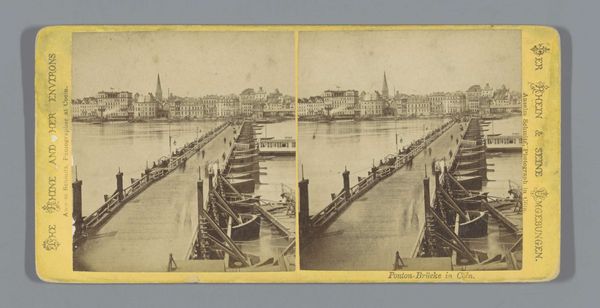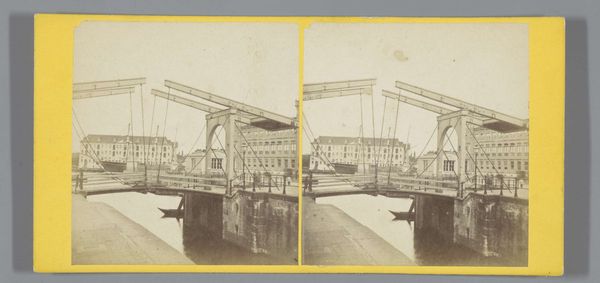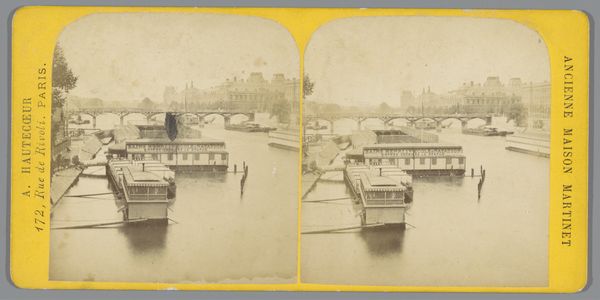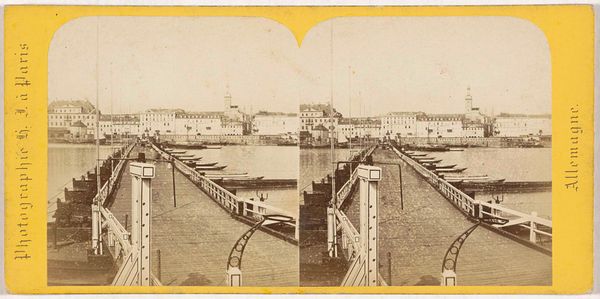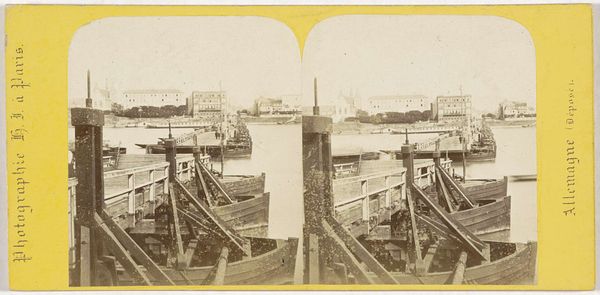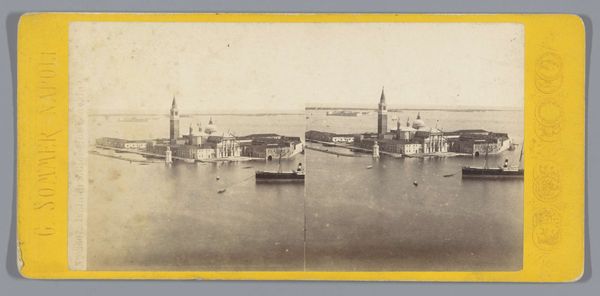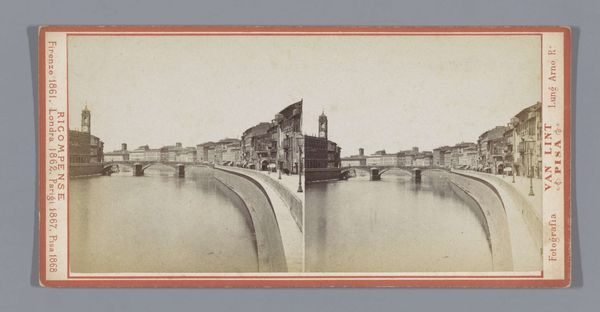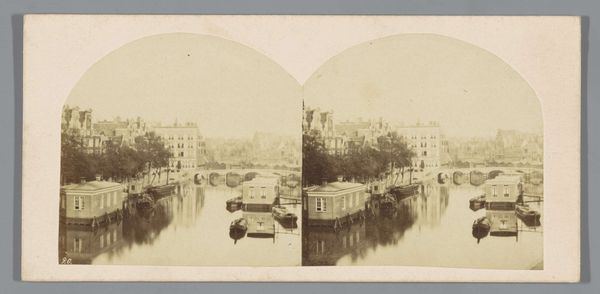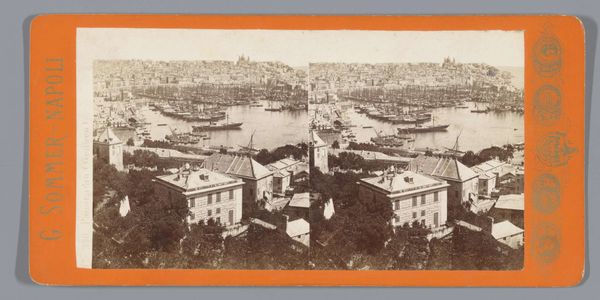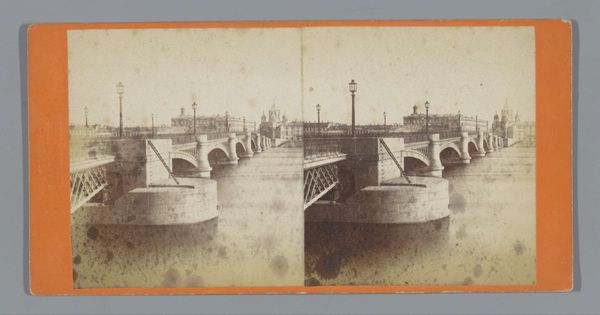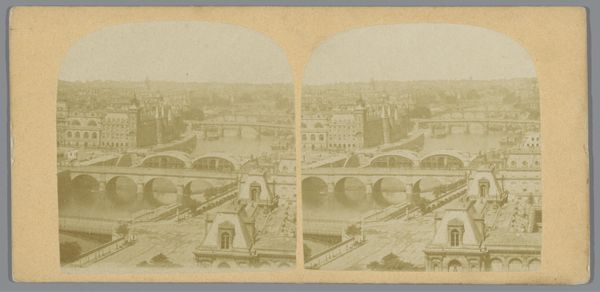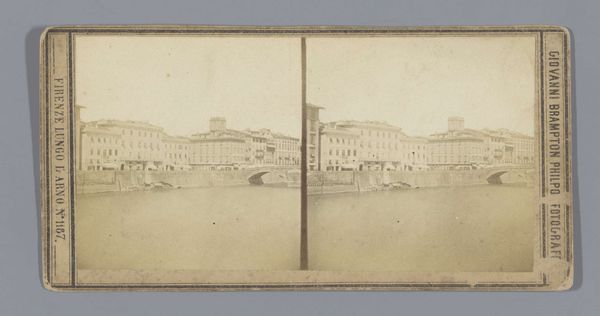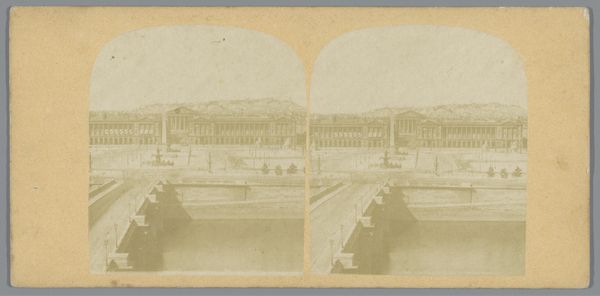
print, photography, gelatin-silver-print
# print
#
landscape
#
photography
#
gelatin-silver-print
#
cityscape
#
realism
Dimensions: height 85 mm, width 170 mm
Copyright: Rijks Museum: Open Domain
Curator: What a melancholic yet hopeful view. A gelatin silver print photograph titled “Schipbrug over de Rijn te Keulen” attributed to Johann Heinrich Schönscheidt dating from before 1880. The subject appears to be a pontoon bridge across the Rhine in Cologne. The entire photographic plate is rendered in muted sepia tones. Editor: It does possess an undeniable nostalgic charm, even as it reflects a rather strict and socially stratified era in Cologne’s history. The industrial revolution was churning full steam ahead, and you see this tension of new modes for travel versus, what appear to be traditional lifestyles along the riverside. Curator: Exactly! The bridge itself can symbolize connectivity and change. As you mentioned, it does so against a traditional cityscape background—a fascinating study in contrast! Before bridges such as this, water represented division, a sort of underworld barrier. The bridge then acts a vehicle of the collective unconscious. The gothic church in the distance is especially powerful. Editor: Cologne has certainly seen so much change, hasn't it? We should ask whose perspectives are prioritized within the photograph's representation of city life. Consider this composition as the staging of power—whose narratives and concerns do we, and do we not, perceive in the depiction? I cannot see a strong indication of diverse or underrepresented social identities and their labor reflected, can you? Curator: It’s a perspective rooted firmly in its time. However, the meticulous detail applied in capturing the pontoon bridge itself suggests admiration for technology, which perhaps indirectly points to emerging middle class values. I am not so sure we can fault Schönscheidt's focus when documentary photographic processes were also in their infancy! It seems quite ambitious to capture the architectural cityscape behind it at all. Editor: True, it's useful to avoid applying present-day expectations directly. Still, acknowledging the limits and biases in archival representation, rather than allowing nostalgic charm to distract, will help contemporary audiences derive fuller meaning. Curator: Yes. Recognizing what *isn’t* readily apparent can definitely unlock further contextual layers for understanding. Ultimately this photograph is both beautiful and full of potential dialogue. Editor: Agreed, and that intersection between aesthetic enjoyment and social inquiry makes it truly worth revisiting.
Comments
No comments
Be the first to comment and join the conversation on the ultimate creative platform.
